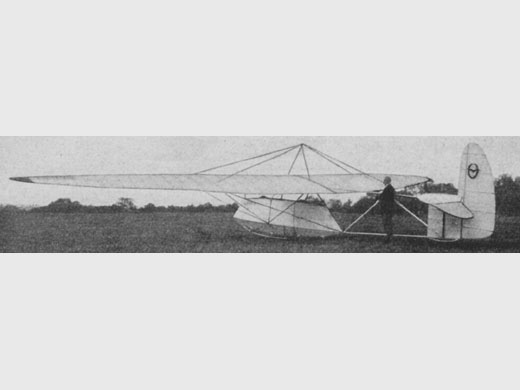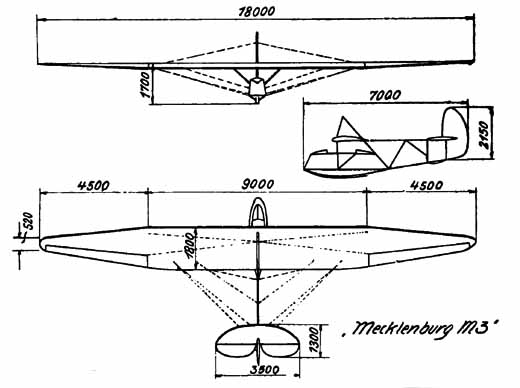
Rostock M-III Rostock
Autre nom (ou nom en langue originelle) : Rostock M-III Mecklenburg| DONNÉES GÉNÉRALES |
| Année du premier vol (ou de design, si seul projet) |
1929 |
| Pays | Allemagne |
| Designer(s) | KREKEL, P. |
| Premier constructeur | Mecklenburgischer Aero-Klub, Rostock (DE) |
| Type d'appareil | Planeur |
| Fonction | Initiation |
| SPÉCIFICATIONS TECHNIQUES |
| Envergure | 18 m |
| Longueur | 7 m |
| Hauteur | 2.15 m |
| Allongement | 12.2 |
| Surface alaire | 26.6 m2 |
| Profil aile | Göppingen 532 |
| Masse à vide | 154 kg |
| Masse maxi | 294 kg |
| Charge alaire | 11.3 kg/m2 |
| Vitesse mini | -- |
| Vitesse maxi | -- |
| Finesse maxi | |
| Taux de chute mini | -- |
| Nb sièges | 2 |
| Structure | Tubes d'acier soudés et toile |
AUTRES INFORMATIONS
| Constructeur(s) |
| ||||||
| Infos techniques | -- | ||||||
| Histoire résumée | A participé au concours de la Rhön 1929. With the intention of developing this strutted two-seater type still further, the design "Rostock M III" was brought out. With this machine the design of the fuselage and tail of the "M II" were retained in detail and the wing still further developed in the direction of soaring efficiency. The main supporting surface is, on the contrary, braced in the case of the "M III," and is carried out in four sections. The inner wing portions are rectangular in plan form, of two-spar type of construction with rigid wooden diagonals. The outer wing portions, which are attached at the points where the wing is braced, have a trapeziform outline with rounded tips. Both spars meet in a point and in the inner panels are likewise cross-braced with wooden diagonals. The ailerons stretch along the whole length of the outer wing portions. Apart from the wings all other parts are carried out in welded steel tubing construction and are hardly altered as compared with the "M II." As special features this machine possesses ailerons with differential movement and the dihedral angle of the outer wing portions is adjustable. By doubling the aspect-ratio of the "M II" the structural weight of the whole machine was increased to 5.8 kg. per sq. metre, so that this aircraft also can be described as exceptionally light. Furthermore it showed also very good soaring capabilities both as single-seater and as two-seater, and at present is the type best adapted to school purposes. | ||||||
| Liens personnalités | KREKEL, P. (Allemagne) | ||||||
| Compléments docs |
SOURCES DOCUMENTAIRES
| Liens WEB | Site : UIUC Applied Aerodynamics Group . Göttingen 532 airfoil. (2009-11-29) Site : UIUC Applied Aerodynamics Group . Göttingen 532 fichier DAT. (2009-11-29) |
| Livres | Das Segelflugzeug par LANGSDORFF, Werner von (1931) [p. 162. Photo + specs]. Forschen-Bauen-Fliegen par LEMKE, Frank-Dieter & JACOB, Rolf (2010) [p. 36. Note]. |
| Autres sources | Technical report of the Rhön glider meeting 1929, par A. Lippisch, Wasserkuppe, Rhön, The British Gliding Association Journal vol. 1 n° 3, janvier 1931 p 66-82. Publié in "Zeitschrift fiir Flugtechnik und Motorluftschriffahrt," volume 21, No. 4, p. 92 ; editeur R. Oldenbourg, Munich. Texte + specs. 2-seat primary training gliders, par Gábor Fekec, VGC News n° 145 (hiver 2015) p 37. Photo |

Team J2mcL © 2003 -
- Pages optimisées pour Mozilla Firefox

